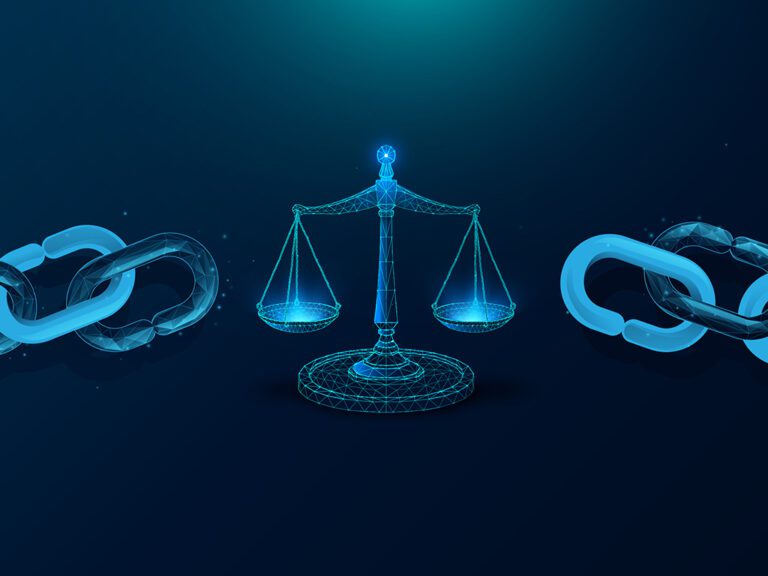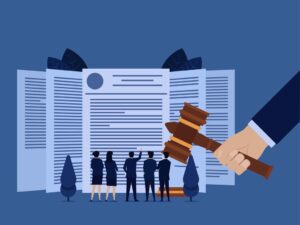GCs Need Efficiency, Legal Ops Need Structure—Legal Tech Delivers Both
By Evan Wong
April 21, 2025

Evan Wong is the Co-Founder and CEO of Checkbox, the leading AI intake and matter management software used by corporate legal teams including SAP, BMW, and Pepsi, to capture, automate and track all matters without changing how lawyers and business users work. He can be reached at evan@checkbox.ai.
Published in Today's General Counsel, May 2025
Legal teams are often caught trying to balance two things: efficiency and structure. Thankfully, legal tech plays a pivotal role in navigating this challenge.
On one side, there’s pressure to move fast—keeping up with business priorities and minimizing friction. On the other, there’s the need for standardized workflows that ensure smooth, error-free operations.
This highlights the push and pull between general counsel (GCs) and legal ops.
GCs want speed. They need efficiency to focus on high-impact work and avoid getting bogged down by admin tasks. Simultaneously, legal ops are responsible for making sure legal workflows are in order—organized, scalable, and trackable. When these priorities don’t align, the result is frustration, inefficiencies, and missed opportunities.
But it doesn’t have to be that way. The right technology can bring both sides together, giving GCs the agility they need while allowing legal ops to maintain the structure that makes it all work.
Common Struggles That Create Friction
On paper, GCs and legal ops are working toward the same goal—making the legal department a high-performing, business-aligned function. But in practice, their approaches can clash.
GCs are focused on outcomes. They want to cut through red tape, resolve matters quickly, and free up time for strategic work. If something is slowing the business down, they want it fixed—yesterday.
Legal ops knows that speed without structure leads to chaos. They think in terms of systems, consistency, and long-term scalability. A process that works once isn’t enough—it needs to work every time, for everyone.
Tension arises when these perspectives don’t align. Without the right tools, this misalignment creates bottlenecks and a legal team that feels like it’s always running to keep up. This is where technology comes in—not just as a tool but as a way to align priorities and bridge operational gaps.
How Legal Tech Bridges the Gap
The best in-house legal teams aren’t just efficient or structured—they’re both. The right technology makes this possible by helping GCs move quickly without sacrificing organization and giving legal ops the structure they need without slowing things down. Here’s how technology, such as legal intake and workflow software, makes it work:
Single Source of Truth – When intake, matters, and reporting all live in one place:
- All requests and matters are automatically drawn from various sources into one system.
- GCs get instant visibility into their team’s workload.
- Legal ops can track and manage processes efficiently.
- No more chasing updates across emails and spreadsheets.
Workflow Automation – Routine tasks no longer drain time:
- Approvals and intake requests are triaged based on predefined rules.
- Documents and contracts are generated automatically.
- GCs can focus on strategic work instead of admin.
- Legal ops ensures consistency by reducing manual intervention.
Data-Driven Decisions – Real-time insights replace reliance on intuition:
- GCs can quantify legal’s impact and justify resources.
- Legal ops can track efficiency, spot bottlenecks, and refine processes.
- Everyone makes decisions based on up-to-date facts and metrics.
Scalability – As legal’s workload grows, tech keeps things under control:
- Processes scale without adding friction.
- Governance and compliance remain intact.
- Legal can support the business at every stage of growth.
With the right technology, GCs and legal ops don’t have to pull in opposite directions. Instead, they work together—faster, smarter, and more in sync with the business.
Strengthening the GC-Legal Ops Partnership
Legal tech is a powerful tool—but it’s only as effective as the people using it. When GCs and legal ops work as partners instead of separate functions, legal becomes stronger, more strategic, and far more efficient.
That starts with breaking down silos. Shared tools, shared visibility, and regular check-ins keep both sides aligned, ensuring legal isn’t just reacting to business needs but actively driving value. When each understands the other’s priorities, collaboration becomes second nature.
Alignment also means agreeing on what success looks like. GCs care about managing risk and proving legal’s business impact. Legal ops focuses on efficiency and resource optimization. The best way to bridge the gap is to define key metrics that reflect both perspectives. When reporting reflects shared priorities, decision-making becomes more strategic and effective.
Finally, the strongest legal teams embrace a culture of data and innovation. Legal is evolving, and those who cling to “the way it’s always been done” risk losing their competitive edge. The most successful teams continuously use performance metrics to refine their processes, explore new tools, and stay open to change. When GCs and legal ops embrace adaptability, legal becomes a proactive force—driving efficiency, reducing risk, and delivering measurable business impact.
Must read intelligence for general counsel
Subscribe to the Daily Updates newsletter to be at the forefront of best practices and the latest legal news.
Daily Updates
Sign up for our free daily newsletter for the latest news and business legal developments.




